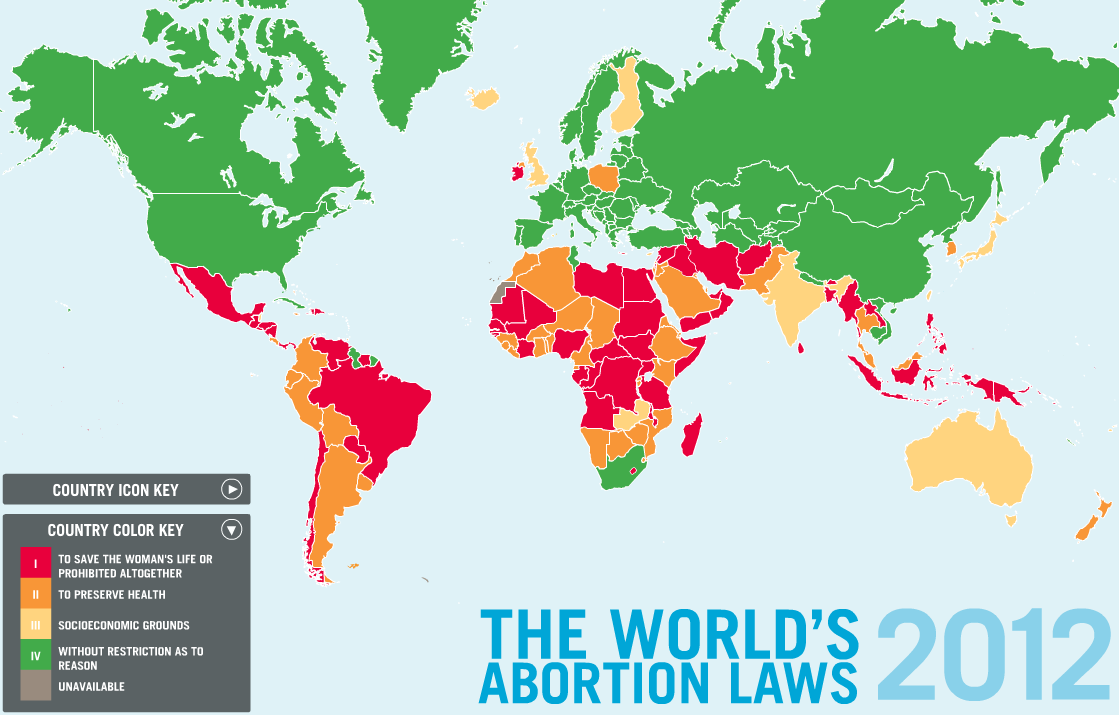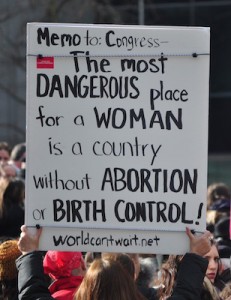Word Of The Month: Illegal
“In truth, laws are always useful to those with possessions and harmful to those who have nothing; from which it follows that the social state is advantageous to men only when all possess something and none has too much.”
? Jean-Jacques Rousseau, The Social Contract
Illegal, or unlawful, is used to describe something that is prohibited or not authorized by law. We find this work used constantly in discourses on abortion. But do we understand its nuances and use it accurately?
Although women have had spontaneous miscarriages and induced abortions since time immemorial, most societies and religions have at some point or another attempted to create rules and laws to regulate this practice. Some countries have pro-natalist policies and the laws restrict access to abortion in order to help increase the population. This desire for increase is driven mainly by market forces (to expand the labour force) or military concerns (to expand the armed forces). These laws, rarely if ever, take into consideration the right of the woman to control her own body, bodily integrity, fertility while they may speak of health and safety.

Please find an interactive version of the above map here: http://worldabortionlaws.com/
We often hear people say that abortion is ‘illegal’ in a certain country but in the strict meaning of the word, abortion, or rather ‘safe abortion’ is illegal in less than a handful of countries. Almost every other country has a law that permits access to a safe abortion at least to save the life of the mother and very often also if the pregnancy is a result of rape or incest or the fetus is deformed.
 This makes safe abortion highly restricted but not illegal. This is a fine distinction but a crucial one since most people, especially the medical profession is extremely wary of doing something which could be construed as illegal and hence create barriers to access even for women who can have this procedure performed in accordance with the laws of the country (Eg. Savita Halpannavar’s case in Ireland).
This makes safe abortion highly restricted but not illegal. This is a fine distinction but a crucial one since most people, especially the medical profession is extremely wary of doing something which could be construed as illegal and hence create barriers to access even for women who can have this procedure performed in accordance with the laws of the country (Eg. Savita Halpannavar’s case in Ireland).
The reality is that women have the same number of abortions in every single country across the world. Sounds surprising but it is true ! What is different is that in countries where the law is restrictive more women have unsafe abortions and are at greater risk of being seriously ill due to complications and even dying. ( Ref: Facts About Induced Abortion By The Guttmacher Institute) These women end up in hospitals with septicaemia, perforations, peritonitis, bleeding and a host of other traumas. This costs not only a heavy burden on public health facilities but also takes a huge toll on the finances of these women, most of whom are from low social economic classes (studies show that rich women will almost always be able to access a safer service no matter what the law—which makes this an issue of social justice also).

Restrictions can drive women to seek safe abortions elsewhere. There is the well documented phenomenon of abortion tourism in Europe where women from Ireland or other countries travel into the United Kingdom to access safe abortion services.
Having an abortion law alone is no guarantee that abortions will be safe and accessible for all women around the country. Some countries seem to have done well for women without an abortion law. For example Canada which seems to have no law on abortion has better access than a few countries with laws.
Then there is India, which has had a law for safe abortion since 1971 and still has at least 6 times as many unsafe abortions as safe services due to a combination of lack of awareness, stigma, lack of trained providers and lack of safe and affordable facilities. In fact, a study conducted in South India also showed that the so called illegal or informal providers have moved on to using the medical abortion pill and are causing much less morbidities than their legal counterparts the ObGyns who are yet to give up on D&C as a method !!
In an article published by the John Hopkins University Press, Rebecca Cook and Bernard Dickens speak of the Human rights dynamics of abortion law reform in the Human Rights Quarterly
“The legal approach to abortion is evolving from criminal prohibition towards accommodation as a life-preserving and health-preserving option, particularly in light of data on maternal mortality and morbidity. Modern momentum for liberalization comes from international adoption of the concept of reproductive health, and wider recognition that the resort to safe and dignified healthcare is a major human right. Respect for women’s reproductive self-determination legitimizes abortion as a choice when family planning services have failed, been inaccessible, or been denied by rape. Recognition of women’s rights of equal citizenship with men requires that their choices for self-determination be legally respected, not criminalized. “

The Special Rapporteur of the Human Rights Council, Anand Grover, has released a groundbreaking report on the right of everyone to the enjoyment of the highest attainable standard of physical and mental health.
In this report, he states that “ Criminal laws penalizing and restricting induced abortion are the paradigmatic examples of impermissible barriers to the realization of women’s right to health and must be eliminated. These laws infringe women’s dignity and autonomy by severely restricting decision-making by women in respect of their sexual and reproductive health.”
We will be back in the next article with more details on abortion laws across world and in Asia with Penal code hangover, our study on legal professionals, maybe something from SARJAI, women in prison due to abortion






